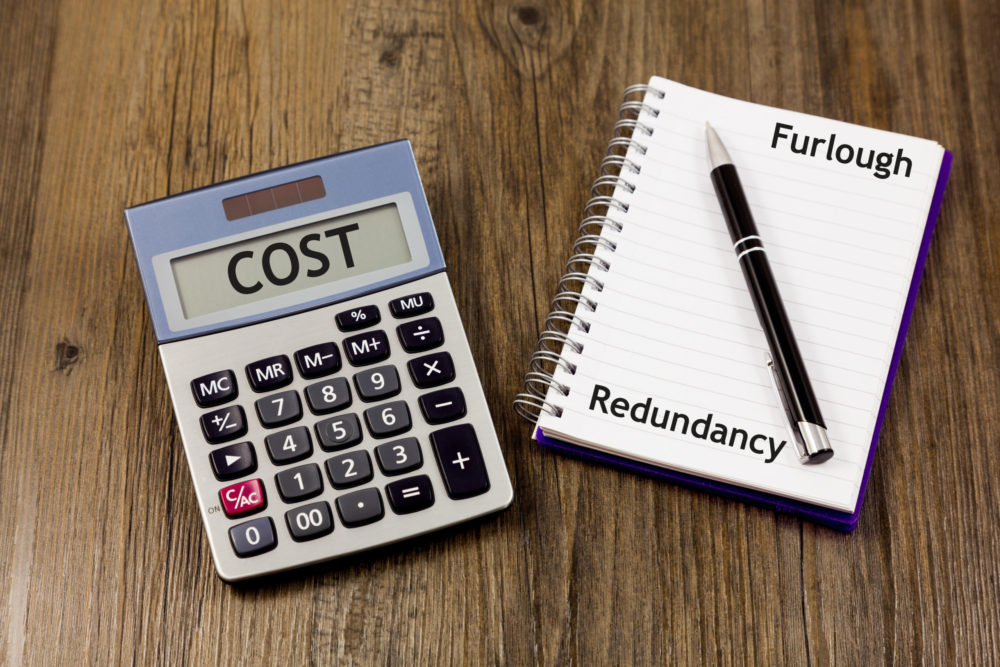With a major recession looming, and the OECD predicting the UK will suffer the biggest economic hit from the corona virus among the world’s leading economies,many companies across a wide variety of sectors are struggling to keep going. Some will go to the wall, others will have little choice but to radically restructure to keep going.
Furlough scheme coming to an end
From the 1 st September, the government’s furlough subsidy will be reduced to 70% of wages, up to a maximum of £2,190 per month. This will reduce further on 1 st October to 60%, up to a maximum of £1,875 per month. If employers have agreed more generous top-ups, they will be required to top up wages to 80% or higher. Barring any last-minute changes, the scheme will come to a close on 31 st October, when all support will be withdrawn. Although the longer than expected tapering of the scheme has given some employers time to explore how redundancies can be minimized, many will be unavoidable. Many employers are now faced with little choice but to plan for redundancies.
Managing the furlough to redundancy process
It has been possible to begin the redundancy process during the furlough scheme if a strong business case can be made. As with any redundancy however, there is a process to follow if you wish to avoid a case for unfair dismissal being made. If you feel there is little other option, this process can start while employees are on the furlough scheme. However, many employers are choosing to delay starting the redundancy process until the end of October.
Redundancy process
For any redundancies there is a statutory obligation to make an alternative job offer to anyone who is faced with redundancy if there are suitable alternative vacancies in the company. You should be able to make a strong business case for the redundancies,
which for most companies will currently be the dramatic drop in turnover as a result of the Covid-19 pandemic. If you’re planning to make more than 19 members of staff redundant it’s a legal requirement to hold a collective consultation. Even if the numbers are less than 19, it’s still good practice to consult staff to help ensure the process is as understood as possible, and that ongoing morale is protected as best as possible.
Deciding who to make redundant
If it’s apparent that redundancies are unavoidable, one of the most difficult decisions facing any employer is who exactly to make redundant. The decision-making process about who is made redundant should be as transparent and clear as possible and should usually be informed by a number of factors. These might include the standard of work, skills and experience, attendance record
excluding absences for reasons such as pregnancy or disability and their disciplinary record. Everyone who is being made redundant has the right to speak to you about the decision-making process.
Making people redundant
Whether you are making people redundant during or just after the furlough period, you are required by law to provide written notice to the employees in question. The amount of statutory notice required is determined by their length of service. If
the employee has more than one month of employment, but less than two years the notice period is one week. If they have completed more than two years of service, but less than twelve years, the notice period is one week for every full year of service.
For those who have served more than twelve years the notice period is twelve weeks. You should check the contract for each employee who is to be made redundant, to see if their notice period is statutory, or contractual as the latter may differ from the
statutory minimum. This will impact how their final paycheck is calculated. Part of the notice period involves calculating the details of their final paycheck for the employee. This should be based on their salary, not the furlough pay they’ve been
receiving from the UK government. Any annual leave they have left to take should be factored into the final amount.
Impartial professional advice
If you have decided that redundancies are inevitable as the furlough scheme comes to an end, we can offer impartial advice as to the best way to proceed. We provide a full range of comprehensive business advice and consultancy services to improve your
business performance and increase your bottom line. In today’s challenging economic environment our effective, personable and
experienced team can help your business plan strategically for the future.
Morgan Reach is a well-established firm of accountants with offices in London and Birmingham. Well known for its innovative approach and placing its clients at the forefront of the practice, Morgan Reach provides a variety of accounting services such as compliance, tax services, company secretarial services, business consultancy and accounts as well as strategic growth advice for an extensive range of business sectors including manufacturing, healthcare, construction and property, retail and entertainment, media and sports.
DISCLAIMER: This article is for guidance only, and professional advice should be obtained before acting on
any information contained herein. Morgan Reach Chartered Certified Accountants cannot accept any
responsibility for loss occasioned to any person as a result of action taken or refrained from in consequence
of the content of this article.







